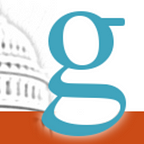Should Congress overturn the post-9/11 law banning flights near sports stadiums during NFL / MLB games, NASCAR races?
No actual jets are allowed above New York Jets games.
Context
Mere days after 9/11, the FAA (Federal Aviation Administration) banned aircraft from flying near open-air stadiums during certain sports games.
Since then, the rule has been: no flights near an NFL, MLB, Division I college football game, or NASCAR race seating at least 30,000 people, from one hour before it starts to one hour after it ends. That no-fly zone extends 3,000 feet above ground and three nautical miles away.
Exceptions are granted for aircraft operated by emergency services, law enforcement, or the military. That’s why the Super Bowl annually features a flyover of military jets during the closing notes of the national anthem.
While “aircraft” primarily meant planes back in 2001, the modern rules also apply to civilian-controlled aircraft like drones.
What the provision does
Congress is currently debating a massive FAA reauthorization funding bill, which would fund the agency at $103.9 billion over the next five years, plus make a few rule changes too.
One such rule change would allow the agency to grant waivers shrinking that no-fly zone, from three miles around a sports game down to three-quarters of a mile.
In other words, it would still remain illegal to fly an aircraft directly above an outdoor sports stadium during a game. The 3,000-foot height restriction above the stadium would also still apply.
The tentative provision is labeled Section 813 of the Securing Growth and Robust Leadership in American Aviation Act.
The overall bill was introduced in the House as H.R. 3935 by Rep. Sam Graves (R-MO6), a longtime pilot who chairs the House Transportation and Infrastructure Committee.
What supporters say
Supporters argue that more than two decades after 9/11, it’s now time to loosen — but not eliminate — the current limits.
“It’s simply wrong to suggest that existing flight restrictions have any connection to preventing terrorism,” Graves told ESPN. “It’s also wrong that a construction crew wanting to use a drone to inspect a roof three miles away… has to wait until a ballgame is over to do their job, or else they’re breaking federal law.”
“The FAA already gives waivers for team owners and special guests flying their helicopters and private planes near a stadium,” Rep. Graves continued, “so why should it be any different for the rest of the general public, who can also demonstrate a clear need and meet the requirements for obtaining a waiver?”
What opponents say
Opponents counter that the number of years since 9/11 is no reason to let your guard down.
“Given the proliferation of [drones in our national airspace], as well as the continuing need to remain vigilant to other current and emerging risks, the stadium flight restriction is as vital now as ever to our national security and public safety,” top security officials for the NFL, MLB, NASCAR, and NCAA wrote to Congress in July. “We believe section 813 complicates the airspace over stadiums, compromises public safety and security, and courts potential disaster.”
Odds of passage
On July 20, the House passed the overall legislation overwhelmingly by a 351–69 vote. Both parties largely voted in support: Republicans by 187–31, Democrats by 164–38.
Since no standalone vote was taken on the no-fly zone provision specifically, its levels of support versus opposition are unclear.
However, 48 bipartisan House members signed a letter to the Senate Commerce Committee advocating the upper chamber remove the provision. The signatories comprised 42 Democrats and six Republicans, including some members who supported the legislation overall but opposed that specific provision.
President Joe Biden similarly supports the FAA reauthorization bill overall, but expresses concern with that specific provision.
“The bill could introduce unnecessary risks to those attending major sporting events, if the effectiveness of safety and security buffers currently provided by temporary flight restrictions were to be decreased,” the White House said in a Statement of Administration Policy.
Both the overall bill, and that specific provision, will now be decided by the Senate.
— — — — — — — — — — — — — — — — — — — — —
This article was written by GovTrack Insider staff writer Jesse Rifkin.
Want more? Follow GovTrack by email, on Mastodon, or on Threads.
And for our “A Bill a Minute” video series — on TikTok, on Instagram, or on YouTube.
Like our analyses? Support our work on Patreon.
